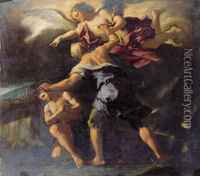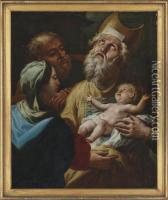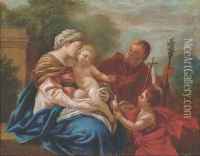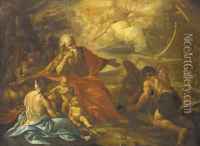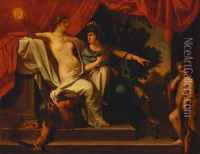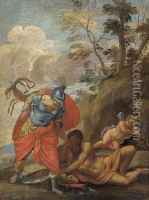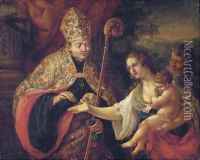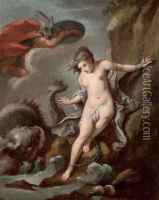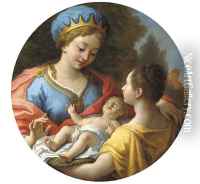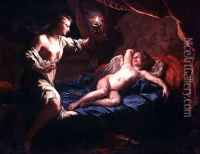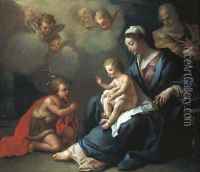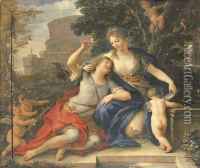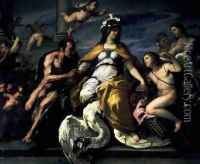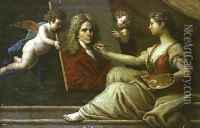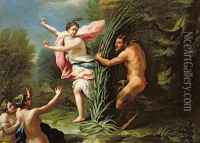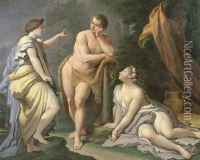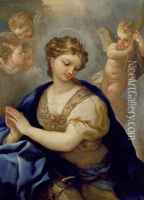Paolo di Matteis Paintings
Paolo di Matteis was a distinguished Italian Baroque painter, born in 1662 in Piano del Cilento, near Salerno. He is considered one of the leading artists of the late Baroque period in Italy and is known for his dynamic compositions, vibrant use of color, and skilled depiction of light.
Matteis initially trained under the painter Luca Giordano in Naples, which was a major center for art during the 17th century. Under Giordano's guidance, he learned to embrace the dramatic and expressive potential of the Baroque style. Matteis' early work was primarily religious in nature, reflecting the Counter-Reformation's emphasis on art as a vehicle for spiritual engagement and devotion.
In the early 1690s, di Matteis moved to Rome, where he came into contact with the works of artists such as Raphael and Annibale Carracci. The influence of their classical approach to composition and form can be seen in his later works. During his time in Rome, he also became acquainted with the circle of the influential art patron, Cardinal Pietro Ottoboni, which included composers like Arcangelo Corelli and artists like Francesco Trevisani.
Paolo di Matteis' career flourished when he returned to Naples. He received numerous commissions for altarpieces, frescoes, and paintings from religious institutions as well as from the aristocracy. His masterworks from this period include 'The Adoration of the Shepherds' and 'The Martyrdom of Saint Januarius.'
Di Matteis' success reached beyond Italy, and he was invited by the Earl of Manchester to England, where he painted for the royal court. In London, he created works for St. James's Palace, and his style was influential in the development of English Rococo.
Despite his success, Paolo di Matteis' later years were marked by financial difficulties, and he died in relative obscurity in 1728. His works were rediscovered in the 20th century, and he is now recognized as an important figure in the development of late Baroque and early Rococo art in Italy.
